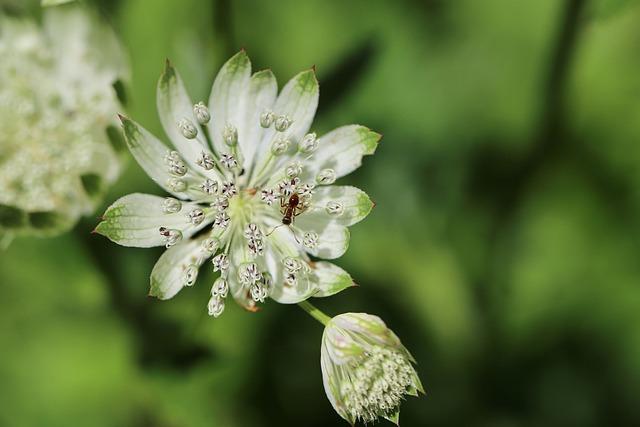Picture this: you’re at a party and the vibe is going strong. Your friends pick up their guitars and start strumming away, but when it comes time for you to impress with some chords, all you can muster up is a sad sad tune that makes everyone think you’re auditioning for the world’s most depressing one-man band. Fear not, fellow music enthusiasts, for today we are going to demystify the elusive major chords and show you the diverse forms and practical applications that will have you jamming like a rockstar in no time. So grab your instrument and get ready to unleash your inner musical genius!
Contents
- 1 Exploring the Foundation: Understanding Major Chords
- 2 The Spectrum of Major Chord Variations: From Triads to Extended Harmonies
- 3 Incorporating Major Chords into Different Musical Genres
- 4 Techniques for Creating Rich Harmonies with Major Chords
- 5 Navigating Major Chord Inversions for Enhanced Musical Phrasing
- 6 Practical Applications: Composing and Arranging with Major Chords
- 7 The Role of Major Chords in Melodic Development and Songwriting
- 8 FAQs
- 9 In conclusion, major chords may seem like mysterious musical entities, but once you understand their diverse forms and practical applications, you’ll be playing them with confidence and finesse. So go forth and unleash the power of major chords in your music, and remember – always be major, never minor!
Exploring the Foundation: Understanding Major Chords
So you’ve mastered the basics of music theory and you’re ready to take on the world of major chords. Get ready to dive deep into the foundation of music with this exploration of major chords!
Major chords are like the superheroes of the music world – they’re strong, powerful, and always ready to save the day. With three notes working together in perfect harmony, major chords create a sound that is both bright and uplifting. It’s like the musical equivalent of a ray of sunshine on a rainy day.
When it comes to major chords, understanding the intervals between the notes is key. The formula for a major chord is simple: you take the root note, skip a note, play the next note, skip another note, and play the next note. Easy peasy, right? With a little practice, you’ll be cranking out major chords like a pro.
Major chords are the building blocks of so many great songs, from pop hits to classical masterpieces. They’re the backbone of the music we love, so take some time to really explore and understand the magic behind these powerful triads. With major chords in your musical arsenal, the possibilities are endless!
The Spectrum of Major Chord Variations: From Triads to Extended Harmonies
Major chords, also known as happy chords, come in a variety of shapes and sizes. From the basic triad to the jazzy extended harmonies, here’s a breakdown of the different flavors you can add to your musical palette:
First up, we have the classic triad. Just three notes stacked on top of each other like a musical Jenga tower. Simple, yet effective. Major 3rd, perfect 5th, boom – you’ve got yourself a major chord. It’s the bread and butter of harmony, the Mac and Cheese of chords. Nothing fancy, but oh so satisfying.
Feeling adventurous? How about adding a 7th to your chord? Suddenly, you’ve gone from plain vanilla to a triple scoop sundae with all the toppings. The 7th adds a bit of tension, a bit of spice to the mix. It’s like putting hot sauce on your ice cream - unexpected, but surprisingly delicious.
But why stop there? Take a walk on the wild side and throw in some 9ths, 11ths, and 13ths into the mix. Suddenly, your chord is like a jazzed-up cocktail, with layers of flavor that keep you guessing. It’s the musical equivalent of a fusion restaurant – you’re not quite sure what you’re eating, but damn, it tastes good.

Incorporating Major Chords into Different Musical Genres
Major chords are like the chameleons of the music world – they can fit in just about anywhere! Whether you’re rocking out to some classic rock, grooving to a funky bass line, or even tapping your foot to a country twang, major chords can add that extra oomph to your favorite tunes.
So how can you incorporate major chords into different musical genres? Well, for starters, major chords are your best friend when it comes to pop music. Just throw in a catchy melody, some simple lyrics about love or heartbreak, and boom – you’ve got yourself a hit!
If you’re more into the indie scene, major chords can still be your go-to. Just strum a few simple chords on an acoustic guitar, add in some poetic lyrics, and you’ve got yourself a hipster anthem that’ll have everyone at the coffee shop snapping their fingers in no time.
And let’s not forget about jazz – major chords are essential for that smooth, laid-back sound that makes you feel like you’re sipping a cocktail in a smoky speakeasy. Just throw in a few seventh chords, some improv solos, and you’ll be swinging and swaying in no time!

Techniques for Creating Rich Harmonies with Major Chords
Ever wondered how to spice up your major chord progressions with some rich harmonies? Look no further, because we’ve got the techniques to take your music to the next level!
One of the simplest ways to create lush harmonies with major chords is by adding in some **extended notes**. For example, try adding the 7th, 9th, or even 11th to your chords for a more colorful sound. Trust us, your ears will thank you!
Another fun technique is to experiment with **chord inversions**. By rearranging the notes within a chord, you can create a whole new world of harmonies. Play around with different inversions and see which ones resonate with your soul.
And last but not least, don’t be afraid to throw in some **suspensions and resolutions**. These little musical surprises can add a lot of drama and emotion to your chord progressions. Try resolving a suspended chord to a traditional major chord for that extra “wow” factor.

Have you ever found yourself feeling stuck in a musical rut when playing major chords? Well, fear not, because we are here to guide you through the wonderful world of major chord inversions! By mastering different inversions, you can spice up your musical phrasing and add an extra layer of depth to your playing.
One of the keys to navigating major chord inversions is understanding the concept of root position, first inversion, and second inversion. It may sound like we’re delving into some complicated mathematics, but we promise it’s not as daunting as it seems. Think of it as a mystical journey through the enchanted forest of music theory – with a few wrong turns and some magical discoveries along the way.
When you start experimenting with major chord inversions, you’ll notice that each inversion has its unique sound and feel. It’s like trying different flavors of ice cream – each one brings a new and exciting sensation to your taste buds (or in this case, your ears). So, don’t be afraid to mix and match inversions to create your signature musical phrasing that will leave your audience in awe.
With a bit of practice and experimentation, you’ll soon find yourself effortlessly gliding through major chord inversions like a seasoned magician casting spells. Before you know it, you’ll be weaving enchanting musical phrases that will captivate listeners and elevate your playing to a whole new level. So, grab your instrument, dive into the world of major chord inversions, and let the magic begin!
Practical Applications: Composing and Arranging with Major Chords
So you think you know major chords? Well, buckle up, because we’re about to dive into the wild world of composing and arranging with these bad boys. Major chords are like the meat and potatoes of music theory – they’re versatile, reliable, and they go with pretty much everything.
When it comes to composing, major chords are your best friend. They’re like that one friend who always knows what to say to make you feel better – except in this case, they know what notes to play to make your music sound amazing. Major chords can add warmth, brightness, and a sense of stability to your compositions, making them a go-to choice for creating memorable melodies and harmonies.
Arranging with major chords is where things get really fun. You can experiment with different voicings, inversions, and chord progressions to create a variety of moods and textures in your music. Whether you’re going for a breezy, uplifting vibe or a dramatic, emotional sound, major chords can help you achieve the perfect sonic landscape for your arrangement.
So, the next time you sit down to compose or arrange a piece of music, remember the power of major chords. Mix them, match them, and let them take your music to new heights. And who knows – you might just stumble upon a magical chord progression that becomes your signature sound. Happy composing!
The Role of Major Chords in Melodic Development and Songwriting
Major chords are like the trusty sidekick of the music world. They’re the Robin to the melody’s Batman, always there to support and lift up the hero of the song. Without major chords, melodies would be like a plant without water – dry and lifeless.
When it comes to melodic development, major chords are the foundation upon which great songs are built. They provide a stable and harmonious backdrop for the melody to soar over, like a majestic eagle riding the wind. Just imagine a song without major chords – it would be like a sandwich without bread. Sure, you could still eat it, but it just wouldn’t be the same.
But major chords are more than just a supporting player in the world of songwriting. They can also be the star of the show, shining bright and stealing the spotlight with their catchy and uplifting sound. Think of them as the Beyoncé of the music world – always ready to take center stage and wow the audience.
So next time you sit down to write a song, remember the important role that major chords play in melodic development. Embrace their uplifting and harmonious qualities, and let them guide you to creating a melody that will stick in the listener’s head long after the song is over.
FAQs
What are major chords and why are they important?
Major chords are like the cherry on top of a musical sundae – they add sweetness and color to a piece of music. They are made up of the 1st, 3rd, and 5th notes of a major scale and serve as the backbone of many popular songs. Without major chords, music would be as bland as a PB&J sandwich without the jelly.
What are some different forms of major chords?
Major chords come in all shapes and sizes, like a musical snowflake. From your classic triad to more complex variations like major 7ths or major 9ths, there’s a major chord for every mood and occasion. Want to add a touch of sophistication to your song? Throw in a major 7th. Feeling adventurous? Go for a major 13th and watch your audience’s jaws drop.
How can major chords be used in practical applications?
Major chords are like the Swiss Army knife of music theory – versatile and oh-so handy. Use them to build catchy melodies, create emotional depth, or simply add a pop of color to your composition. Whether you’re writing a toe-tapping pop song or a heart-wrenching ballad, major chords are the secret sauce that ties it all together.
Do major chords have any hidden superpowers?
Oh, absolutely. Major chords have the power to lift spirits, bring people to tears, or make you want to dance like nobody’s watching. They can turn a bland musical canvas into a vibrant masterpiece and leave listeners begging for more. So next time you’re stuck in a musical rut, just remember – major chords are your ticket to harmonic bliss.



